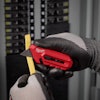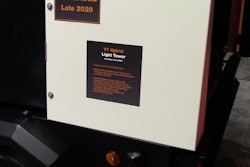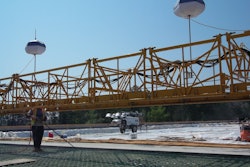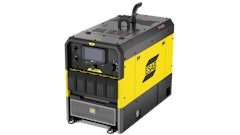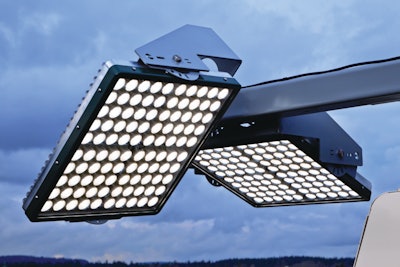
Light towers are a key piece of equipment on construction jobsites to keep an area safely lit while working at night or in a dark indoor area. But not all light towers are the same.
There are different light tower lamp options available, and contractors should know the differences between the lighting technology to decide which technology and light tower is best suited for a particular job or construction company. While metal halide lamps have dominated the industry, the introduction of LED lamps is starting to gain ground with its ability to help save fuel costs, and the recent introduction of plasma bulbs offers a unqiue - but still in its infancy - option. Here's what contractors should know about these three light tower lamp technologies:
Metal Halide Technology
BENEFTITS:
- Been in use in the industry for over 40 years
- Most commonly used light technology on light towers
- Cost effective
- High efficiency
- Lights worksite and area around worksite
- Estimated 10,000-hour bulb life (for 1000 watt lamps)
LIGHT OUTPUT:
"There are actually many different wattage metal halide lamps available, but the 1000 watt has been the industry standard," say Doug Dahlgren, director of marketing for Allmand Bros, Inc. These lights are rated at 110,000 lumens per lamp. Some light towers may have a higher 1250 watt system that can produce more lumens. Dahlgren says the Allmand 1250 watt tower produces 150,000 lumens per lamp.
These lights typically produce 110 to 120 lumens per watt (lumens divided by watts). Since most light towers using metal halide lamps feature four lamps, a four light tower will produce between 440,000 and 600,000 lumens of light on the jobsite. That production helps light the surrounding area as well as the working area to contribute to a safe and productive worksite.
CONSIDERATIONS:
Metal halide lamps take a little longer to start than other technologies. Dahlgren says metal halide lamps can take three to five minutes to attain their full brilliancy. They can also take 10 to 15 minutes to restart after the lights have been turned off, he adds.
Contractors should also note a difference in bulb life. Dahlgren says with higher wattages the bulb life usually goes down. While a 1000 watt metal halide lamp typically has a bulb life of 10,000 hours, a 1250 watt lamp typically has a bulb life around 7,000 hours.
Also, Dahlgren points out that the metal halide system consists of a lamp, ballast and capacitor. He says the lamp will only produce the rated output if all the components are designed as a system.
LED Technology
BENEFITS:
- LED lights are solid state lights meaning they have no filaments that burn out and need replacing
- Fuel cost savings: run less watts which can offer up to a 40% fuel reduction
- Less glare with LED lights
- Clean, clear, more focused light to light the jobsite area and not the surrounding areas
- Full power instantly: no warm up or cool down time needed
- Restrike right away without having to wait for warm up
- Longer life: up to 50,000-hour bulb life
- Run cooler: able to touch the light tower while it is running because the light does not get as hot as other lighting technologies can
LIGHT OUTPUT:
In terms of foot-candle, the measurement of how much light is being put out on ground level, Chad Hislop, associate product manager, light towers, for Terex Aerial Work Platforms, says LEDs produce a near equivalent foot-candle on the ground in the jobsite area as metal halide lights do. In terms of lumens per watt, Hislop says LEDs typically run approximately 60 lumens per watt.
CONSIDERATIONS:
Hislop says the biggest question contractors should ask themselves is how much area do I need to light? Do you need to only light the work area or will you need to illuminate the surrounding areas, too? With the steep light drop off with LED lights, if you need to light outside the work area another option might be better.
The other consideration Hislop highlights is whether a contractor will take advantage of the fuel savings. He says at this time, contractors need a long-term use situation where they are running the LED light towers often in order to take advantage of the fuel savings.
"You save 40 percent on your fuel," Hislop says. "When you start to use it over a long period of time – and you're using several light towers - your fuel costs start to get really high, and that's when you start to think about alternatives like LED." If a contractor only uses light towers every so often it can take longer to recognize the fuel savings with a LED tower.
Plasma Bulb Technology
BENEFITS:
- Light spectrum looks very similar to sunlight
- Conventional electrical connections not needed
- Estimated 30,000 to 50,000-hour bulb life
- High Color Rendering Index (CRI) approximately 90+
- Rapid start and restrike of about 30 seconds
- No audible noise or flicker when illuminated
- Require less power to run
- Compact fixtures
LIGHT OUTPUT:
Multiquip has employed Plasma Lighting in its H2LT Light Towers. According to Multiquip, the plasma bulbs provide 23,000 lumens requiring only 255 Watts of power per bulb. A Color Rendering Index of 94 has also been achieved, says Bruce Coleman, product manager for Multiquip.
CONSIDERATIONS:
Plasma bulbs are a relatively new lighting technology in the light tower market. Coleman says plasma bulbs "highlight the newest lighting technology to complement the use of hydrogen for power production."

